| HOME |
|---|
SCULPTOR
The Sculptor
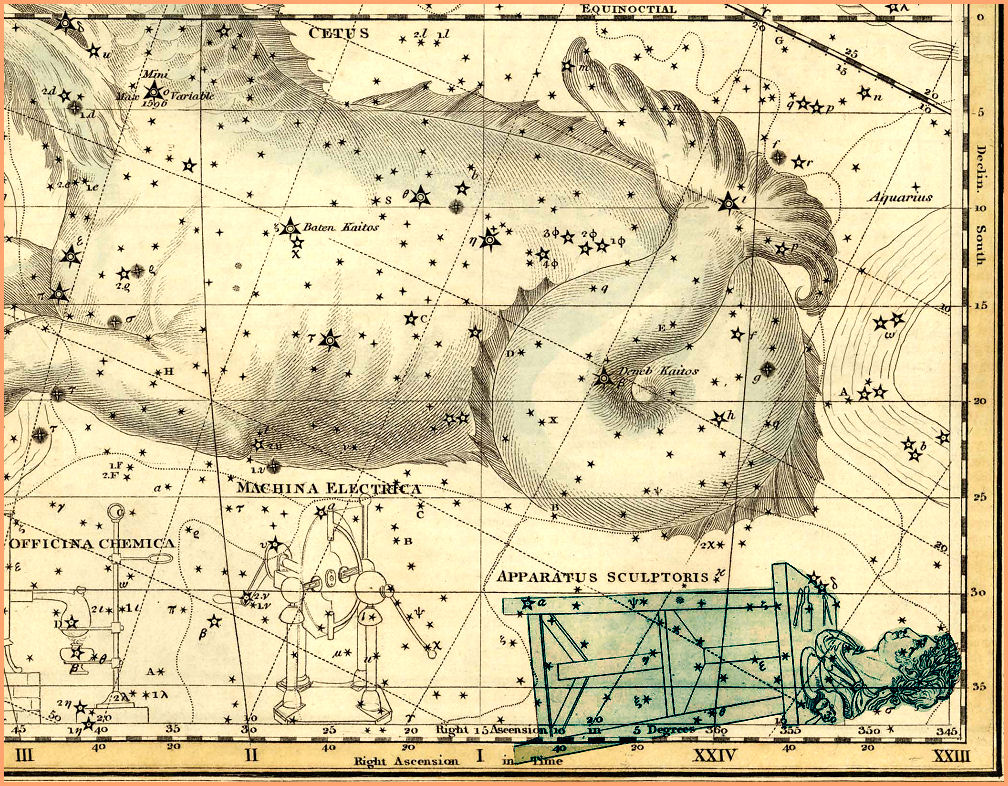
Sculptor - Celestial Atlas by Alexander Jamieson - 1822
| HOME |
|---|

Beneath the tail of the whale, or more properly the sea monster Cetus, lies the rather obscure modern constellation of Sculptor.
In 1751, French astronomer Nicolai-Ludovici de la Caille made a famous expedition to the Cape of Good Hope, South Africa, where he spent a full year making the first official survey of the southern skies. He charted the positions of approximately 10,000 stars, and introduced fourteen new southern constellations to accommodate them. Despite his obvious commitment to the scientific method, his imagination must have been extraordinary to see the obscure figures he came up with, and the constellation Sculptor is no exception, representing a three legged sculpting table upon which sits a bust and assorted sculpting tools.
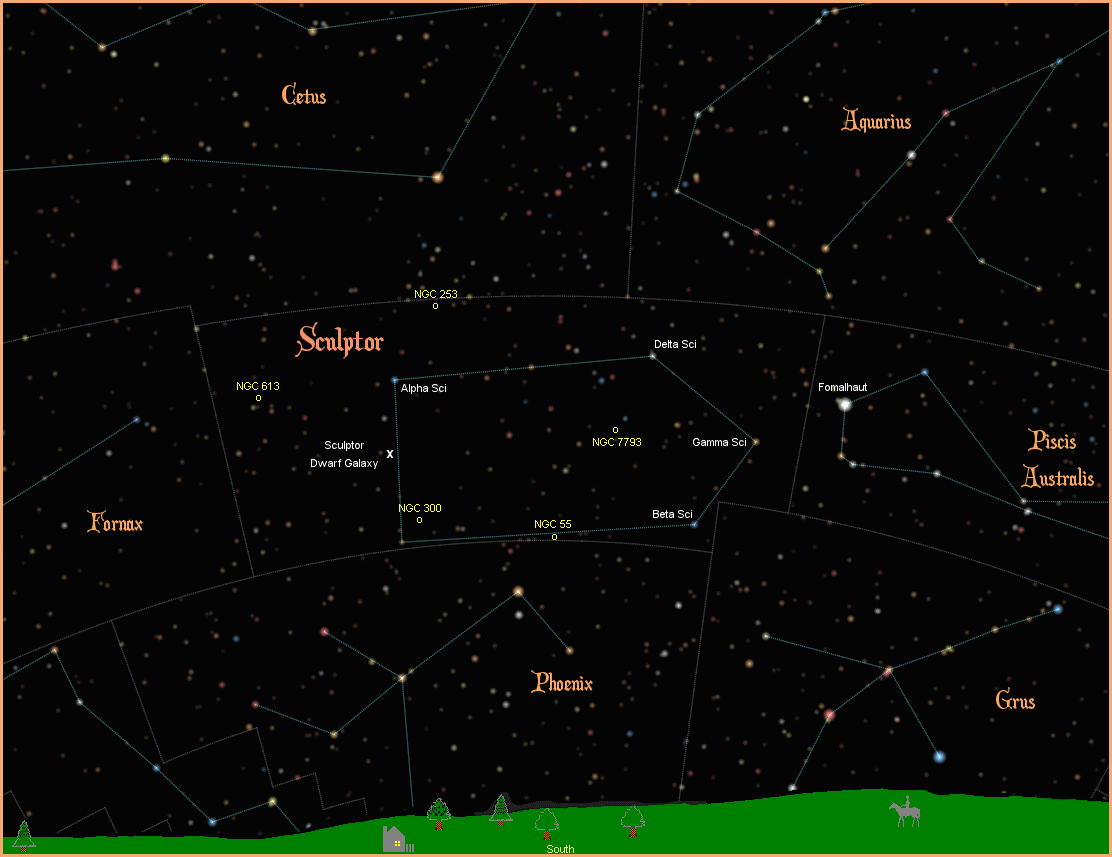
The constellation Sculptor has no named stars. Over in the northeastern corner of the figure, representing a leg of the sculpting table, the brightest star in the constellation is known only by its Bayer designation of Alpha Sculptoris (Alpha Sci). It is a B7II blue bright giant shining with a magnitude of 4.31 from a distance of about 700 light years.
The second brightest star is Beta Sculptoris, just as it should be, representing the southwest corner of the table. It is a B9III blue/white giant with a magnitude of 4.38 from a distance of about 174 light years.
Gamma Sculptoris, is next in line and next in brightness, representing the bust on top of the sculpting table. It is a K1III yellow/orange giant with a magnitude of 4.41 and residing at a distance of 182 light years.
Marking the Northern edge of the table is Delta Sculptoris, the fourth brightest star. It is an A0V white main sequence star with a magnitude of 4.59, about 137 light years away, with two very faint companions.
The constellation Sculptor has four stars with confirmed planetary systems. All the stars are far away beyond visual reach, and the planets are all gas giants. For more information on these and other extrasolar planets, visit NASA's New Worlds Atlas, and The Open Exoplanets Catalogue.
Despite its nondescript appearance and the faintness of the stars, the constellation Sculptor does have some interesting deep sky objects. The closest of these is the Sculptor Dwarf Galaxy, one of the fourteen small satellite galaxies that surround the Milky Way. Classified as a dwarf spheroidal galaxy, it is about 280,000 light years away, consisting of old, dim stars with a collective magnitude of about 10.0.
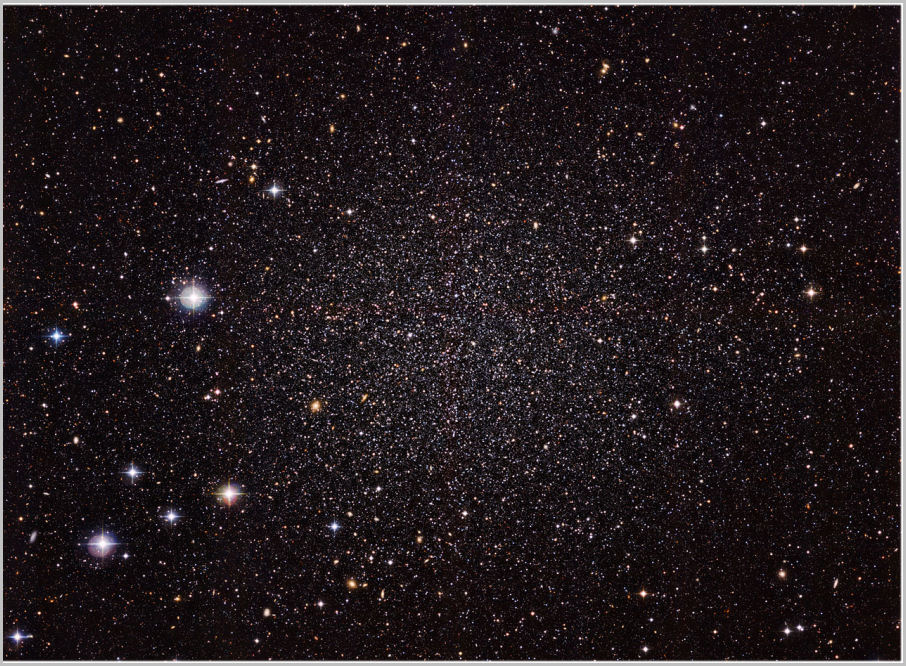
At a much greater distance of 6 million light years we find the closest true spiral galaxy in Sculptor, NGC 300. At magnitude 8.1, and presenting a nice, large, face-on aspect, it is a particularly fine sight in a backyard telescope.
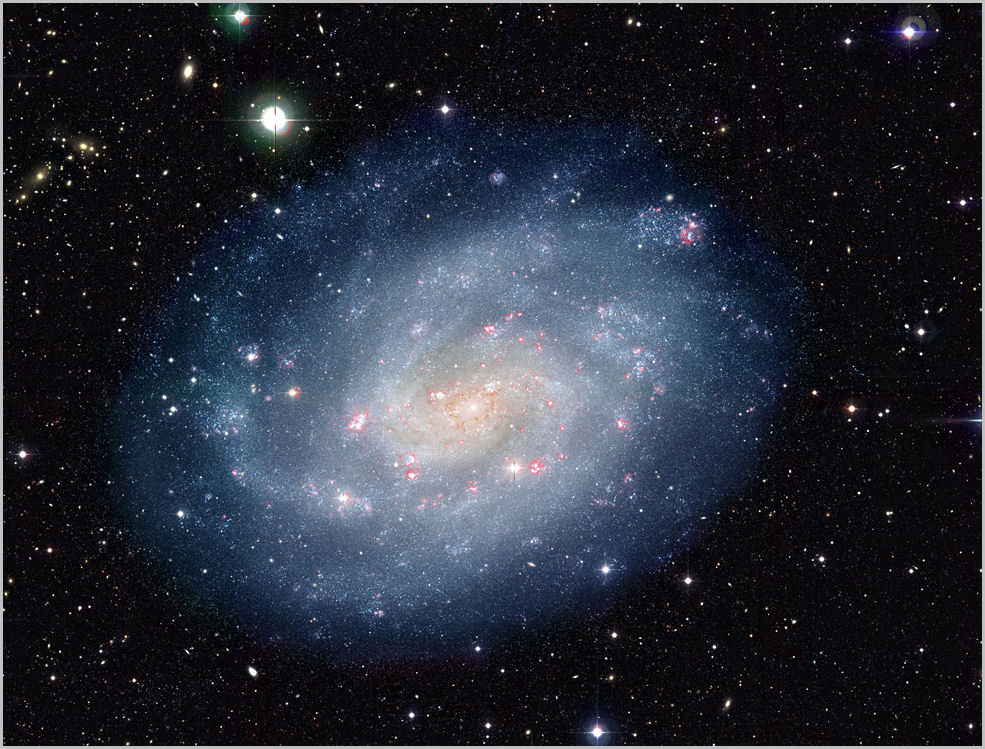
Moving out to a distance of 8 million light years, we find NGC 55. It is an "irregular galaxy", without a defined form, and with a magnitude of 7.9, it is another good target for a small scope.
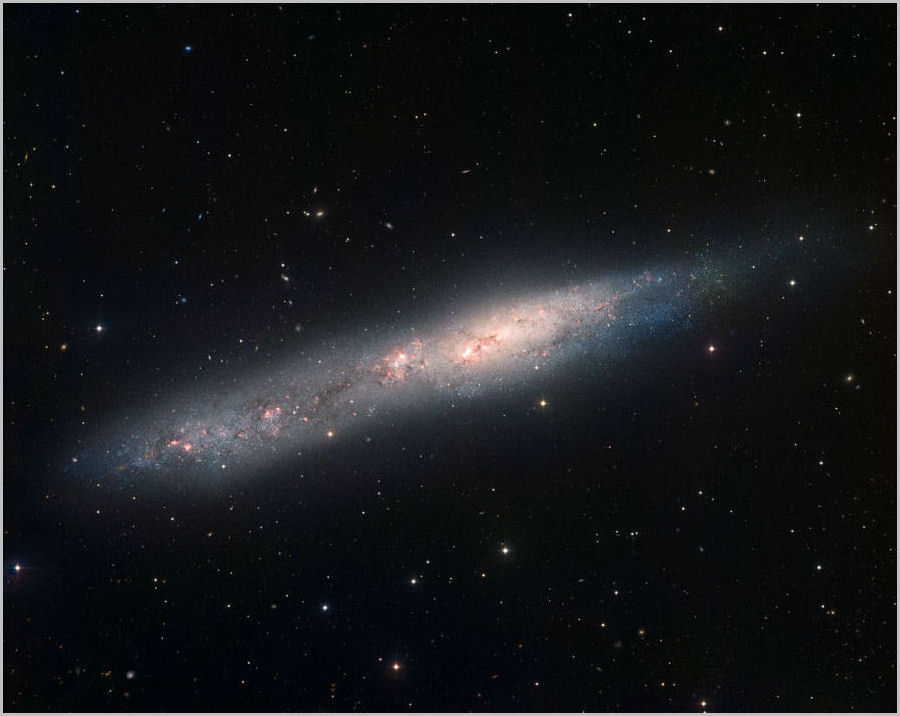
At a distance of 10 million light years, the brightest spiral galaxy in Sculptor is NGC 253, known as The Sculptor Galaxy. Its brightness is due to the fact that it is a starburst galaxy, undergoing a period of intense star formation. With a magnitude of 7.2, it is a good target for a backyard telescope.
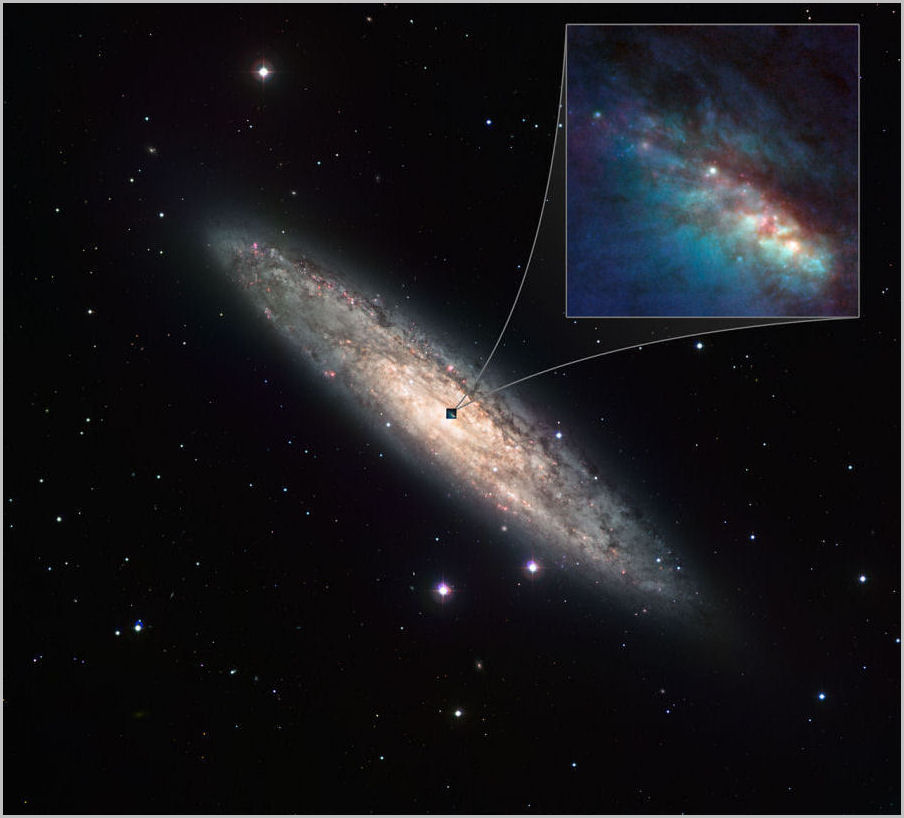
Out at 13 million light years, and a magnitude of 9.1, is the chaotic spiral galaxy NGC 7793.
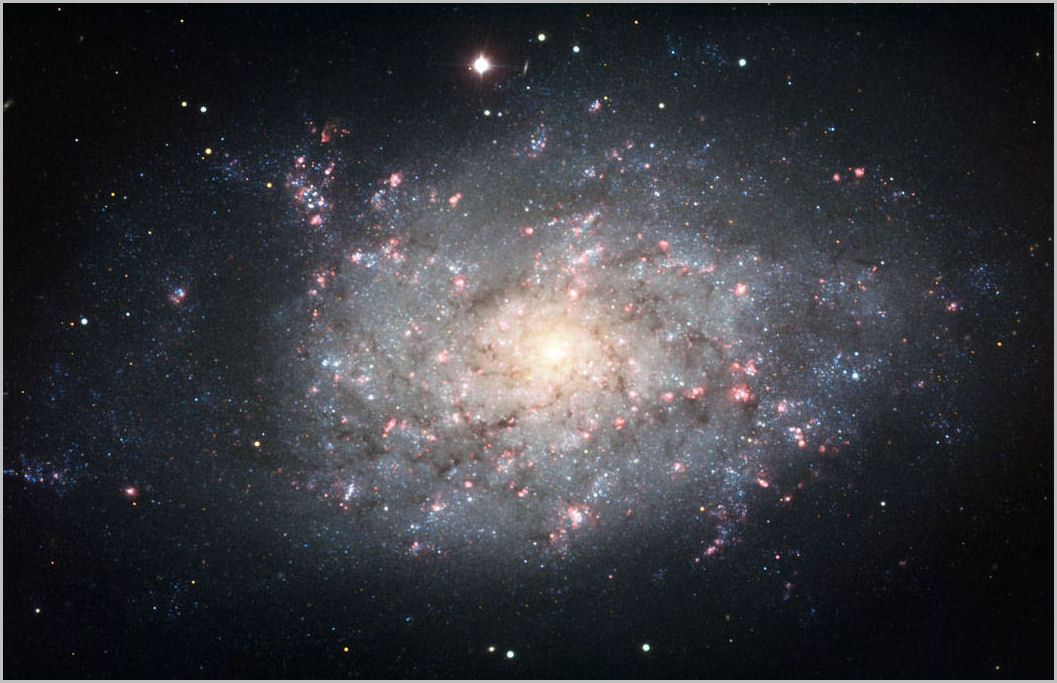
Much farther away at about 80 million light years is the barred spiral galaxy NGC 613, magnitude 10.0. Indications are there is a massive black hole at its centre.
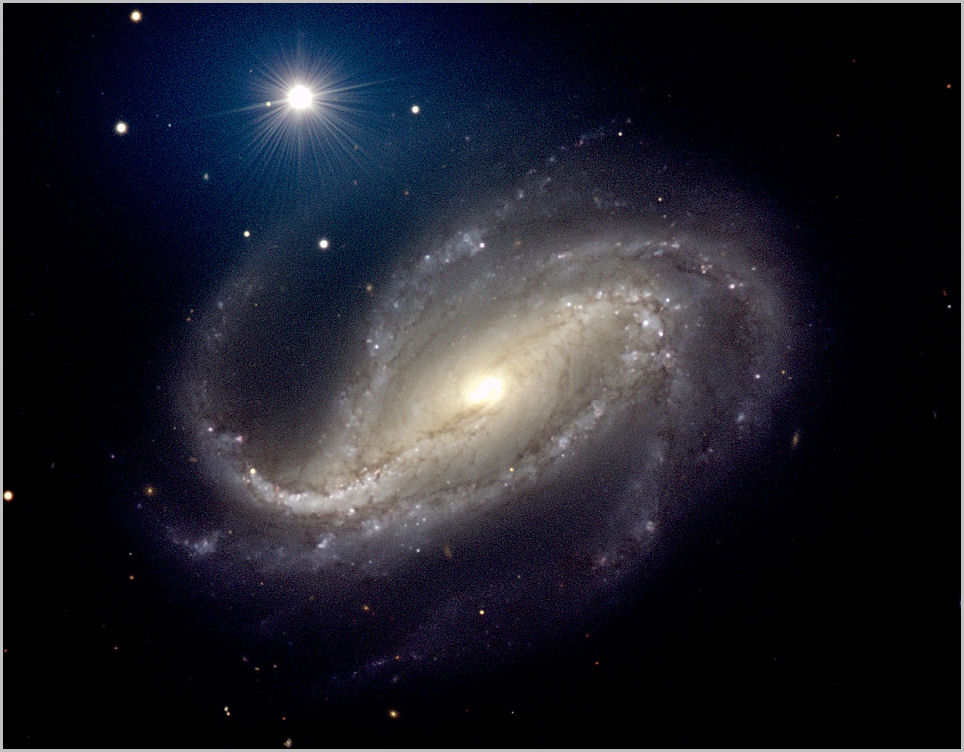
|
|
|
|
|
|